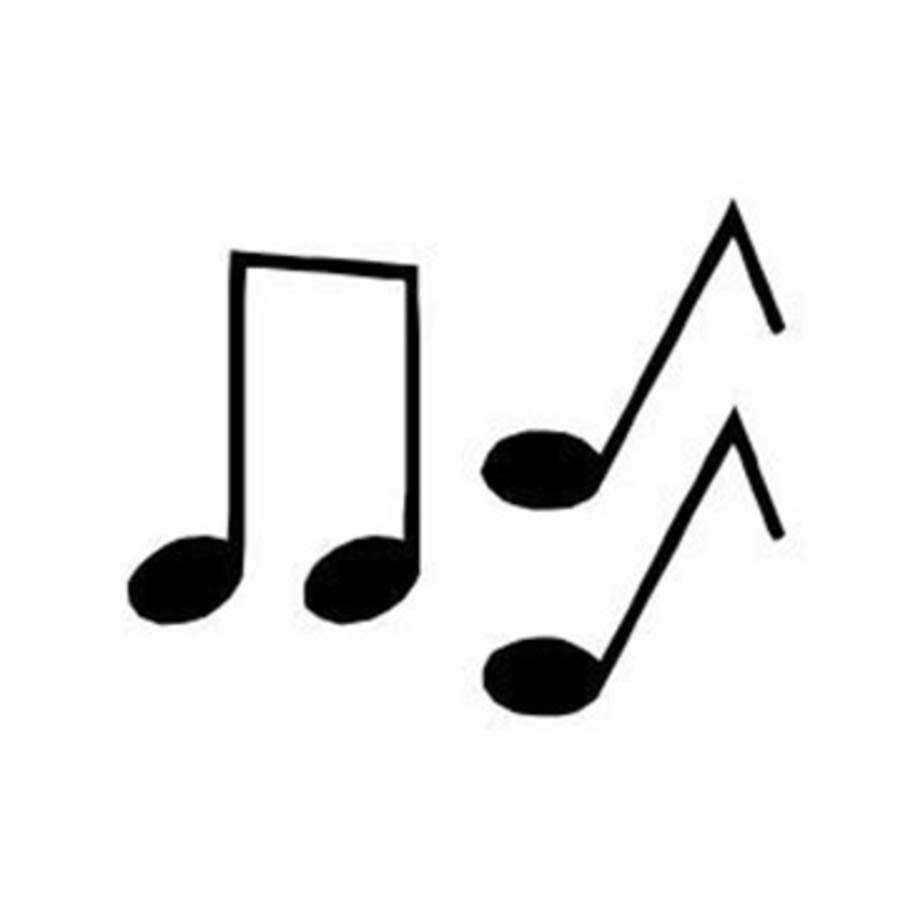LSO Discovery
Friday
Lunchtime Concert: Relaxed performance
Friday 20 November 2020 12.30pm

Friday 20 November 2020
Friday Lunchtime Concert: Relaxed performance

Chevalier de Saint-Georges First movement from String Quartet
No 3
Ravel Second movement from
String Quartet in F
Ewan Mackay Final movement from
'Scenes of Aden' (world premiere)
Borodin Notturno from String Quartet No 2
Beethoven Presto from String Quartet
Op 59 No 3
Clare Duckworth violin
Tom Norris violin
Malcolm Johnston viola
Eve-Marie Caravassilis cello
Rachel Leach presenter
Visit our website for information on how we are ensuring activity at our venue LSO St Luke’s is COVID-19 secure.
Support the LSO's Future
The importance of music and the arts has never been more apparent than in recent months, as we’ve been inspired, comforted and entertained throughout this unprecedented period.
As we emerge from the most challenging period of a generation, please consider supporting the LSO's Always Playing Appeal to sustain the Orchestra, allow us to perform together again on stage, and continue sharing our music with the broadest range of people possible.
Every donation will help to support the LSO’s future.

This performance is generously supported by the Estate of the late Ms Denise Antenen and our Technical Partner, Yamaha Professional Audio.
Joseph Bologne, Chevalier de Saint-Georges
First movement from String Quartet No 3
1770–71

Aside from being a champion fencer and a virtuoso violinist and conductor, Saint-Georges has the distinction of being the first classical composer of African ancestry. His parents were a wealthy slave owner on a plantation in the West Indies and a slave, and many elements of Joseph’s life would make a great movie plot.
So little is known of his musical training, that several myths have grown up around it. We do know that he eventually became the leader of a very good Parisian orchestra and performed his concertos with them, improvising solos at several points and wowing the audience. His appearances with this orchestra led to it being declared the best in France. This string quartet movement is from the early 1770s. It is light, bouncy and completely charming.
Note by Rachel Leach
Maurice Ravel
Second movement from String Quartet in F
1903

Ravel was born in France close to the Spanish border. His Spanish mother was an amateur musician and his father was an inventor of engines and machines. The family moved to Paris when Maurice was only months old and he grew up to be one of the greatest French composers of all time.
To say that this String Quartet from 1904 caused a scandal would be a huge understatement! When the young composer entered the piece for the prestigious Prix de Rome he was expected to win. He didn’t. The head of the Paris Conservatoire resigned and Ravel left the establishment but was catapulted to fame. The piece became instantly famous and remains one of the most performed quartets of the 20th century. And Ravel, one of the most successful composers of all time, also has the distinction of being the only famous French composer not to win the Prix de Rome!
Note by Rachel Leach
Ewan Mackay
Final movement from 'Scenes of Aden' (world premiere)
2018

Scenes of Aden is inspired by Aden Country Park, which is situated in Aberdeenshire. With this piece, I wanted to portray a scene of the park which changes as the piece goes on.
The work is composed in six movements which I had initally envisaged to be played continuously (attaca) but I later decided that as each movement was depicting another scene, it made more sense to allow a short break before the next movement begins, with the exception of the transition between the fifth and sixth movement, as this is a critical moment in the piece where the tension throughout the piece begins to change before the final resolution in the closing bars.
Central to the work's sound is a constant relationship between tension and release of major and minor. The piece is characterised by the shifting back and forth of the two main melodic ideas.
The final movement of the piece was actually the second movement I composed. Having established the first and last movements, I found writing the inner movements relatively simple. In composing the piece in this manner, I found that the material came much faster than with previous work. I feel like there is a great deal of emotion within this piece and the density throughout is finally released once the piece comes to an end.
Note by Ewan Mackay
Alexander Borodin
Notturno from String Quartet No 2
1881

Today, Borodin’s name is associated with music but in his lifetime he was far better known as an organic chemist – there is a scientific principle named after him and he was very active in promoting science as a career for women. Because of this busy scientific life, Borodin described himself as a ‘Sunday composer’ and he therefore didn’t have the time to complete many pieces.
His second string quartet was written in 1881 and dedicated to his wife as a 20th anniversary gift. The four movements tell the story of their first meeting. This movement, the third, is probably the moment they fell in love. It features a gorgeous, singable theme first heard on the cello and much later, made into a song for the musical Kismet.
Note by Rachel Leach
Ludwig van Beethoven
Presto from String Quartet Op 59 No 3
1808

Beethoven was in appearance and manner a very unlikely genius. He was often dirty, dishevelled, rude, aggressive, unpredictable and eccentric but his music re-wrote the rulebook. Beethoven radically developed and transformed every genre he wrote in. At age 28 he began to go deaf and soon could only communicate through the use of a notebook. He only heard his greatest works by imagining the sounds in his head.
In the early 1800s Beethoven wrote his three Rasumovsky Quartets, named after the Russian ambassador to Vienna who commissioned them. This finale movement is known as a perpetuum mobile – meaning that it has a continuous flow of fast notes propelling it forward. It is also fugal, this means that all four players play the same idea but start at a different time. Finally, it is known as one of the most difficult of all Beethoven’s string quartet movements, it is extremely exciting to listen to and of course to play!
Note by Rachel Leach
Artist Biographies

Clare Duckworth
LSO Sub-Principal First Violin


Clare Duckworth studied with Richard Deakin at the Junior School of the RNCM and Mateja Marinkovic and Hugh Bean at the Royal Academy of Music. Having been lucky to receive fantastic training in the National Children’s Orchestra, National Youth Orchestra of Great Britain and European Union Youth Orchestra, all of which she led, Clare went on to hold jobs with the Orchestra of the Royal Opera House, the London Philharmonic (Co-Principal Second Violin) and the Royal Philharmonic (Principal First Violin) before joining the LSO as Sub-Principal First Violin in 2014.
She has coached the violin sections of the NYO, the EUYO and London’s RAM, RCM and GSMD, and served for three years as one of the LSO’s Vice Chairs. When not performing, Clare can usually be found in a book shop, art gallery or up a hill, either at home or (with a bit of luck) abroad.
Tom Norris
LSO Co-Principal Second Violin


Tom Norris graduated from London’s Guildhall School of Music & Drama in 1994, and went on to study in Banff, Canada before joining the Winnipeg Symphony Orchestra as Principal Second Violin. Since returning to London, Tom has been a violinist of the LSO.
Tom has collaborated with countless musicians, ranging from the Schubert Ensemble to Roger Daltrey and The Who. He has recorded with Nanci Griffith, Elvis Costello and Andrea Bocelli, and formed the Puertas Quartet, whose debut CD was critics’ choice in the Strad magazine. He has collaborated with Manu Delago and Living Room in London.
Tom is a member of the Puertas Quartet, formed in 2009, which was critics’ choice in the Strad magazine for its recording of music by Ravel and Tchaikovsky. Tom is also a singer, songwriter and composer, writing for TV and film. He released his debut album, Edge Of The World, in 2009.
Malcolm Johnston
LSO Sub-Principal Viola


Malcolm Johnston earned his Bachelor’s degree at the Royal Scottish Academy of Music and Drama, and continued his post-graduate studies at the Royal Academy of Music in London.
In 1992 Malcolm became violist with the Amernet String Quartet in the USA, with whom he played for four years. The quartet won numerous major awards, including the Gold Medal at the 1992 Tokyo International Chamber Music Competition. More recently he has worked as guest violist with the Leopold String Trio at the Edinburgh Festival and the Snape Proms and also participated in the Chamber Music Series at the Wigmore Hall with the LPO Chamber Players.
Eve-Marie Caravassilis
LSO Cello


‘Particularly dexterous and expressive cello playing’ (Classica Répertoire). French-Guadeloupean-Greek cellist Eve-Marie Caravassilis became a member of the LSO in 2013, following seven years with the acclaimed French ensemble and BBC New Generation Artists Quatuor PSOPHOS, collaborating with renowned artists including Alina Ibragimova, Imogen Cooper, Renaud and Gautier Capuçon, and the Ebene Quartet. She regularly performs as Guest Principal with numerous orchestras, including the English National Opera and City of Birmingham Symphony Orchestra.
Eve-Marie studied with Philippe Muller at the Conservatoire National de Musique de Paris and Jens Peter Maintz at the Universität der Künste in Berlin, obtaining the highest distinctions for her Master and KonzertExam recitals. During her studies, she took part in masterclasses with Mstislav Rostropovitch, Yo-Yo Ma, David Geringas and Jerome Pernoo.
She plays an anonymous French 19th-century cello, generously entrusted to her by the Fonds Instrumental Français.
Watch online: YouTube Sundays
Every Sunday this Autumn we'll be sharing an excerpt, work or full concert from our season at LSO St Luke's on our YouTube channel: 14 weeks of great music to enjoy for free.
Thank You for Watching
As we emerge from the most challenging period of a generation, please consider supporting the LSO's Always Playing Appeal to sustain the Orchestra and allow us to continue sharing our music with the broadest range of people possible.
Every donation will help to support the LSO’s future.
You can also donate now via text.
Text LSOAUTUMN 5, LSOAUTUMN 10 or LSOAUTUMN 20 to 70085 to donate £5, £10 or £20.
Texts cost £5, £10 or £20 plus one standard rate message and you’ll be opting in to hear more about our work and fundraising via telephone and SMS. If you’d like to give but do not wish to receive marketing communications, text LSOAUTUMNNOINFO 5, 10 or 20 to 70085. UK numbers only.
Thank you.
Keep Exploring
- Find out more about LSO Discovery on our website.
- Follow the LSO on Facebook, Instagram and Twitter for quizzes, listening suggestions and more.
- Subscribe to our YouTube channel, where you can watch over 500 videos, including new music released every Sunday.
- Find us on Apple Music to listen to all our recordings.
- Sign up to our email list to be the first to hear about our latest news and programmes.
Keep scrolling for details of our next Friday Lunchtime Concert…
What's Next?
Friday 27 November 2020 12.30pm
Friday Lunchtime Concert
Free YouTube Broadcast

Sally Beamish First movement from 'The King's Alchemist'
Beethoven String Trio No 3
William Melvin violin
Julia O'Riordan viola
Laure Le Dantec cello
Rachel Leach presenter
Broadcast live on YouTube
Available to watch for 90 days.
Makaton symbols are used with the kind permission of The Makaton Charity, all rights reserved.
© The Makaton Charity 2020. Makaton is a registered Trade Mark and Service Mark of TMC

